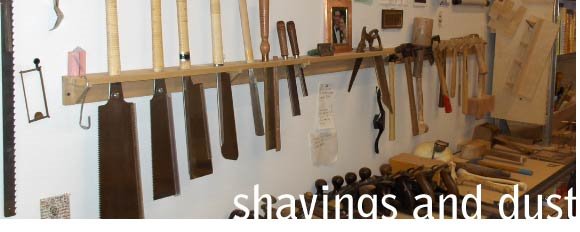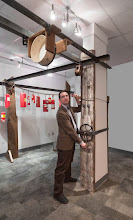not sure you
have any reason to know Steve Wishnevsky. I sure do, he has been a part
of my life in various ways for about twenty years or so now. Ex-hippie,
musician, maker, grump, writer, community builder, crusty old fart that he is,
he helped shape who I am pretty profoundly. I met him in the early ‘90’s in
Winston-Salem at a jam session that he was running.
I had only
recently figured out that the long skinny end of a guitar went in my left hand
and the big round part went against my body on the right. It was through
the extreme patience of Wish and the community of musicians at the weekly jam session
at a little restaurant (now long gone to make way for a freeway overpass)
called the Rose and Thistle that I slowly started to figure out that a guitar
might be used as something other than a prop to attract young ladies, it might
be used to, you know, make actual music that some people might even want to
listen to. This was a revelation to my twenty-year-old self.
I have played
at a lot of jam sessions over the last couple of decades. I have played
in front of people as well, alone or with bands, as a regular member or as a
guest, and I have learned a lot from a lot of people, but it was the initial
welcome into the world of making music that Wish and the folk at that jam
session extended that made it possible. It remains to this day my favorite
way to play music. That is, with other people also playing, playing to
and for and at each other all at once, with many voices rising and many hands
working, joyously creating together something that is so much more grand than
the sum of its parts and that transcends music and the act of making music and
becomes the act of creating community.
Among the
things that Wish makes and has made for much of his life is musical
instruments. Some of them are pretty strange, and they all bear the mark
of a mind that, as we used to say down where I grew up, “ain’t quite right.” In this case, Wish ain’t right in all
of the best ways. He experiments with woods that most luthiers would turn
up their nose at. He makes odd contraptions like harp guitars with
experimental tunings or ten-string classical guitars. I would not even
know how to play most of what he makes, to be honest.
For the
holiday this past winter I wanted to get a Wishnevsky guitar. I have been
making a lot of cigar-box guitars with a tenor scale, and have been getting
pretty comfortable playing at that size, and I wanted a “real” guitar that
had that scale to play around with. One of the things that Wish has been
doing a lot lately (well, for a long time, really, but lately I have been more
aware of it) is re-using things that otherwise might not have much of a life
left in them. Of course this resonates with me. He has also been
getting locally felled wood for his instruments. So the proposition that
I could own a guitar made of wood from my hometown by a maker who lived in my
hometown proved too irresistible a draw for me to pass up. It finally
arrived this past week, and it looks like this:
 The back is
just crazy, wormy box elder, which is not a wood one would typically use to
make a guitar. I am sure glad that he did, though. It looks like
hot rod flames drawn by fungus that get in to the tree, spreading the red
pigment that can be typical in box elder. In time this redness will fade,
which means that the guitar itself will change identities visually as it ages,
in the same way that all guitars change tonally as they age and the cells of
the wood get older and more mellow.
The back is
just crazy, wormy box elder, which is not a wood one would typically use to
make a guitar. I am sure glad that he did, though. It looks like
hot rod flames drawn by fungus that get in to the tree, spreading the red
pigment that can be typical in box elder. In time this redness will fade,
which means that the guitar itself will change identities visually as it ages,
in the same way that all guitars change tonally as they age and the cells of
the wood get older and more mellow.
The top of the
guitar is made of cedar salvaged from the firewood pile and has the
high-contrast flecks of red and white that mark red cedar. The
fingerboard is dogwood, a very hard wood that makes me think about climbing the
twisting dogwood branches in my yard as a youth. The dogwoods were the
most accessible trees for a young climber, low to the ground with a lot of
branches of a size that was good for small hands. They provided a
different kind of lesson as I grew, eventually occasionally breaking beneath my
weight and teaching me about gravity and pain and the need to respect the
natural limits of trees and people alike.
Needless to
say I have been really enjoying playing this guitar, and I look forward to
playing it with others in the very near future. When I play it I am
making music with my hometown and my childhood.
The trees that gave their lives to make this instrument grew up
breathing the same air that I did, they felt the same sultry heat of North
Carolina summers as I did, they absorbed the same sunlight as me. I feel
connected to this instrument immediately, and it is a real joy to play.
In an important
way this is what powers me. This idea that we can be a community of
makers, that we can make what we make in a way that is heavy with meaning and
that builds community and uses objects or music or movement or even just a way
of thinking to create ties that are positive and supportive helps me get out of
bed every day. Most of the people who have been important to me in my
life over the years have been community builders each in their own way, and
this idea that together we can make the world better is a primary motivating
force in my life.
It is a pretty
fortunate place to habit. I am thankful.



2 comments:
Would love to see a little video of you playing that hot rod!
Thanks for your thoughts on your blog. Good stuff to think about.
Aaron Johnson
(Design Ranch attendee)
Would love to see a little video of you playing that hot rod!
Thanks for your thoughts on this blog. Great stuff to think about and inspiring.
Aaron J
(Design Rancher)
Post a Comment